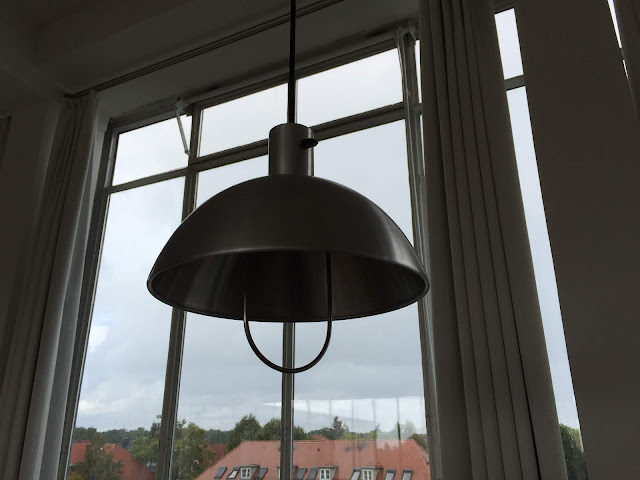バウハウスの校舎の内部は、一部を除いて、自由に見学できるようになっていた。
ある教室に入ると、そこで自分が学んでいたのではないのだが、何とも言えない、懐かしい感じがした。
The inside of the Bauhaus school building was open to visitors, with the exception of some areas.
When I entered a classroom, I felt nostalgic, although I wasn't learning there.
グロピウスは、バウハウスで学ぶ学生たちのために、当時の一流の芸術家たちを招聘した。
ヨハネス・イッテンは、このバウハウスに来る前から、小学校の教師の経験もあり、バウハウスの基礎教育課程を確立した。
グロピウスは、すべての造形芸術の最終目標は建築であるとして、基礎教育の絵画や彫刻も、最終的には建築に結びつくことを意図していた。
しかし、イッテンは、個人の芸術家としての成長をその教育の目的としたことから、やがてグロピウスと対立し、1923年にバウハウスを去ることになった。
Gropius invited leading artists of the time for students studying at Bauhaus.
Johannes Itten, who had experience as an elementary school teacher before coming to the Bauhaus, established a Bauhaus basic curriculum.
Gropius intends that the ultimate goal of all art forms is architecture, and that basic education paintings and sculptures will eventually lead to architecture.
However, Itten decided to leave Bauhaus in 1923 in opposition to Gropius because his educational purpose was to grow as an individual artist.
モホイ=ナジは、1923年からバウハウスに参加した。
モホイ=ナジは、様々な形状を組み合わせて、全体のバランスを構成させる授業を熱心に行った。
現在で言えば、デザイナーのような存在を、モホイ=ナジは育成しようとしていたようだ。
Mohoy-Nagy has participated in the Bauhaus since 1923.
Mohoi-Naji enthusiastically conducted classes that combined various shapes to form the overall balance.
Speaking now, it seems that Mohoi-Naji was trying to nurture a designer-like presence.
パウル・クレーは、バウハウスで独自な造形論を学生たちに教えていた。
その内容は、線、面、空間、構造、そして運動、と続く体系化されたもので、クレー自身の絵画制作のアプローチとも深く関係している。
Paul Klee was teaching his students a unique modeling theory at Bauhaus.
The content is systematized, followed by lines, surfaces, spaces, structures, and movements, and is closely related to Klee's own approach to painting.
クレーの盟友、カンディンスキーも、バウハウスで教師をしていた。
カンディンスキーは、その授業の中で、分析的デッサンという課題を生徒に貸していた。
身の回りの家具や道具を組み合わせて並べ、それを対象の形状だけに焦点を当ててデッサンをするというものだった。
抽象的な絵画を描くような授業で、カンディンスキーが自分の絵画で追求したものを、生徒たちにも教えていたようだ。
Klein's friend Kandinsky was also a teacher at Bauhaus.
Kandinsky lent the student the task of analytical drawing in the class.
It was a combination of furniture and tools around us, and drawing with a focus on the shape of the object.
It seemed to teach students what Kandinsky pursued with his own painting in a class like drawing abstract paintings.
他にも、ヨセフ・アルバース、オスカー・シュレンマーらの個性的な教師たちが、それぞれユニークな授業を行っていた。
そうした授業が行われたかもしれない、バウハウスの教室を巡りながら、錚々たる教師陣によって行われた奇跡のような授業を、是非とも受講してみたいと思う人間は、決して私だけではないだろう。
In addition, unique teachers such as Joseph Albers and Oscar Schlemmer conducted their own unique classes.
I wouldn't be the only person who would like to attend a miracle lesson conducted by the majestic teachers while visiting the Bauhaus classroom, where such a class might have been held.
(Translated by Google Translate)






コメント
コメントを投稿